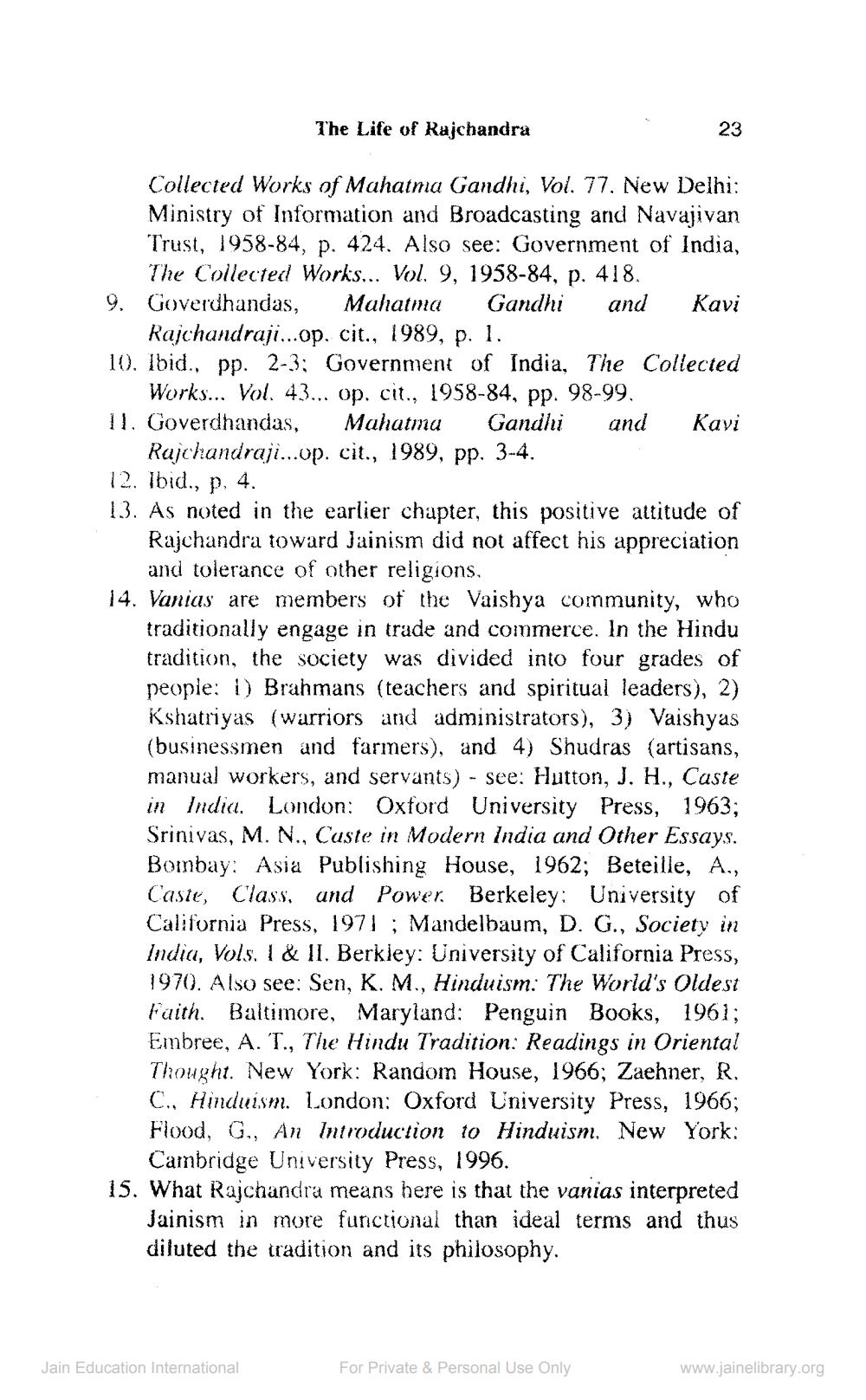________________
The Life of Rajchandra
Collected Works of Mahatma Gandhi, Vol. 77. New Delhi: Ministry of Information and Broadcasting and Navajivan Trust, 1958-84, p. 424. Also see: Government of India, The Collected Works... Vol. 9, 1958-84, p. 418. 9. Goverdhandas, Mahatma Gandhi and Kavi
Rajchandraji...op. cit., 1989, p. 1.
10. Ibid., pp. 2-3: Government of India, The Collected Works... Vol. 43... op. cit., 1958-84, pp. 98-99.
11. Goverdhandas, Mahatma Gandhi and Kavi Rajchandraji...op. cit., 1989, pp. 3-4.
12. Ibid., p. 4.
13. As noted in the earlier chapter, this positive attitude of Rajchandra toward Jainism did not affect his appreciation and tolerance of other religions.
14. Vanias are members of the Vaishya community, who traditionally engage in trade and commerce. In the Hindu tradition, the society was divided into four grades of people: i) Brahmans (teachers and spiritual leaders), 2) Kshatriyas (warriors and administrators), 3) Vaishyas (businessmen and farmers), and 4) Shudras (artisans, manual workers, and servants) - see: Hutton, J. H., Caste in India. London: Oxford University Press, 1963; Srinivas, M. N., Caste in Modern India and Other Essays. Bombay: Asia Publishing House, 1962; Beteille, A., Caste, Class, and Power. Berkeley: University of California Press, 1971; Mandelbaum, D. G., Society in India, Vols. I & II. Berkley: University of California Press, 1970. Also see: Sen, K. M., Hinduism: The World's Oldest Faith. Baltimore, Maryland: Penguin Books, 1961; Embree, A. T., The Hindu Tradition: Readings in Oriental Thought. New York: Random House, 1966; Zaehner, R. C., Hinduism. London: Oxford University Press, 1966; Flood, G., An Introduction to Hinduism. New York: Cambridge University Press, 1996.
23
15. What Rajchandra means here is that the vanias interpreted Jainism in more functional than ideal terms and thus diluted the tradition and its philosophy.
Jain Education International
For Private & Personal Use Only
www.jainelibrary.org




